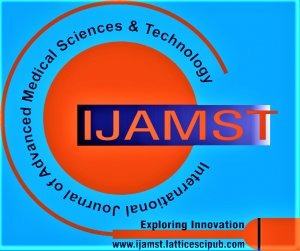![]()
Strategies For Safety: A Mixed Method Study of Communication, Teamwork and Health Professional Attitudes When Implementing Multidisciplinary Simulation in The Emergency Department
Katie Janz1, Kylie Russell2
1Katie Janz, Course Coordinator, School of Nursing and Midwifery. The University of Notre Dame Australia, Fremantle, Western Australia.
2Kylie Russell, A. School of Medicine, The University of Notre Dame, Australia. Fremantle Campus, 21 Henry Street, Fremantle, Western Australia.
Manuscript received on 04 July 2023 | Revised Manuscript received on 14 July 2023 | Manuscript Accepted on 15 August 2023 | Manuscript published on 30 August 2023 | PP: 11-18 | Volume-3 Issue-5 August 2023 | Retrieval Number:100.1/ijamst.E3045083523 | DOI: 10.54105/ijamst.E3045.083523
Open Access | Editorial and Publishing Policies | Cite | Zenodo | Indexing and Abstracting
© The Authors. Published by Lattice Science Publication (LSP). This is an open access article under the CC-BY-NC-ND license (http://creativecommons.org/licenses/by-nc-nd/4.0/)
Abstract: The Emergency Department (ED) team delivers care to critically unwell patients. Within this, there are a range of complexities and responsibilities identified. Technical skills can be taught in lectures and books; however, the newly evolving phenomenon of focusing on non-technical medical skills has advanced over time. Using non-technical skills, such as communication and human factors, can influence the team’s functioning, which could potentially influence a positive outcome of a critical care event. This study explores whether multidisciplinary simulation training, focusing on non-technical skills, can improve participants’ communication and teamwork and if regular simulation practice can influence healthcare staff attitudes towards embedding a regular simulation program at a local site. A convergent mixed method approach was used to determine staff attitude towards a newly implemented simulation programin the hospital ED. Data was collected over six weeks. The quantitative component measured teamwork and communication with Guise’s validated and reliable tool, the Clinical Teamwork Scale (CTS). Further data using a developed evaluation survey provided participant feedback pre and post-simulation. Thirty-two participants, sixteen nurses and sixteen doctors, were surveyed. The results could suggest a trend of a positive outlook towards implementing a regular simulation practice. However, further analysis would be required. A common theme was participant confidence post-simulation practice and willingness to participate in future simulations. Baseline opinions from all participants were positive. The study has generated valuable insight towards staff attitudes toward MDT simulation in the ED setting. The evidence can further support the implementation of a regular simulation program.
Keywords: Communication and Teamwork, health professional attitudes, Multidisciplinary, Simulation Practice, Emergency Department.
Scope of the Article: Health Improvement Strategies
